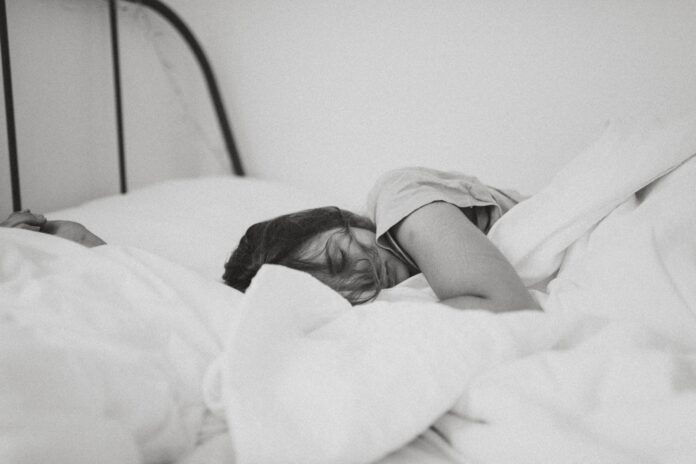
Sleep apnea is a common sleep disorder that affects millions of people worldwide. While it is often associated with men, women can also experience sleep apnea. In this article, we will explore the symptoms, causes, diagnosis, and treatment options for sleep apnea in women. By understanding the signs and seeking appropriate medical help, women can improve their sleep quality and overall health.
What is Sleep Apnea?
Sleep apnea is a disorder characterized by repeated interruptions in breathing during sleep. These interruptions, called apneas, can last for several seconds and may occur hundreds of times per night. The most common form of sleep apnea is obstructive sleep apnea (OSA), which occurs when the muscles in the throat relax and block the airway. Central sleep apnea (CSA) is less common and is caused by a failure of the brain to signal the muscles to breathe.
According to the American Sleep Apnea Association, approximately 22 million Americans suffer from sleep apnea, with 80% of moderate to severe cases remaining undiagnosed [1].
Sleep Apnea Symptoms in Women
While men are more likely to develop sleep apnea, women are not immune to the condition. The symptoms of sleep apnea in women can be different from those in men, making it more challenging to diagnose. Some common sleep apnea symptoms in women include:
1. Snoring: Although snoring is more common in men, women with sleep apnea may also snore loudly and frequently.
2. Gasping or choking during sleep: Women with sleep apnea may experience episodes of gasping or choking as they struggle to breathe.
3. Restless sleep: Women with sleep apnea may toss and turn throughout the night, making it difficult to get a good night’s sleep.
4. Excessive daytime sleepiness: Due to the constant interruptions in sleep, women with sleep apnea may feel excessively tired during the day.
5. Mood changes: Sleep apnea can lead to irritability, depression, and anxiety in women.
6. Memory and concentration problems: Poor sleep quality can affect cognitive function, making it difficult for women with sleep apnea to focus and remember information.
7. Headaches: Morning headaches are common in women with sleep apnea due to the reduced oxygen levels during sleep.
8. Night sweats: Women with sleep apnea may experience night sweats, which can be a sign of disrupted sleep.
Causes of Sleep Apnea in Women
Several factors can contribute to the development of sleep apnea in women. Some common causes include:
1. Obesity: Excess weight, particularly around the neck, can put pressure on the airway and increase the risk of sleep apnea.
2. Age: Sleep apnea is more common in older women, with the risk increasing after menopause [2].
3. Family history: Women with a family history of sleep apnea are at a higher risk of developing the condition.
4. Smoking: Smoking can cause inflammation and fluid retention in the airway, increasing the risk of sleep apnea.
5. Alcohol and sedative use: Alcohol and sedatives can relax the throat muscles, making it easier for the airway to become blocked during sleep.
6. Hormonal changes: Hormonal changes during pregnancy and menopause can affect the muscles in the airway, increasing the risk of sleep apnea.
Diagnosing Sleep Apnea in Women
If you suspect you may have sleep apnea, it is essential to consult with a healthcare professional. A sleep specialist will likely recommend a sleep study, also known as a polysomnogram, to diagnose the condition. This test records various physiological parameters during sleep, such as brain activity, eye movement, heart rate, and oxygen levels. The data collected during the sleep study will help determine if you have sleep apnea and its severity.
Treatment Options for Sleep Apnea in Women
Treatment for sleep apnea in women depends on the severity of the condition and the underlying causes. Some common treatment options include:
1. Lifestyle changes: Losing weight, quitting smoking, and avoiding alcohol and sedatives can help alleviate sleep apnea symptoms.
2. Continuous Positive Airway Pressure (CPAP): CPAP is the most common treatment for sleep apnea. It involves wearing a mask over the nose and/or mouth during sleep, which delivers a continuous flow of air to keep the airway open [3].
3. Oral appliances: Dental devices can help reposition the jaw and tongue to keep the airway open during sleep.
4. Positional therapy: For some women, sleep apnea symptoms may be worse when sleeping on their back. Positional therapy involves using pillows or devices to encourage side sleeping.
5. Surgery: In severe cases, surgery may be necessary to remove excess tissue from the throat or repair structural abnormalities.
Conclusion
Sleep apnea in women is a serious condition that can significantly impact sleep quality and overall health. By understanding the symptoms, causes, and treatment options, women can take the necessary steps to improve their sleep and well-being. If you suspect you may have sleep apnea, consult with a healthcare professional to discuss your concerns and develop a treatment plan tailored to your needs.
References
[1] American Sleep Apnea Association. (n.d.). Sleep Apnea Information for Clinicians. Retrieved from
[2] Bixler, E. O., Vgontzas, A. N., Lin, H. M., Ten Have, T., Rein, J., Vela-Bueno, A., & Kales, A. (2001). Prevalence of sleep-disordered breathing in women: effects of gender. American Journal of Respiratory and Critical Care Medicine, 163(3), 608-613.
[3] National Heart, Lung, and Blood Institute. (n.d.). Sleep Apnea. Retrieved from



